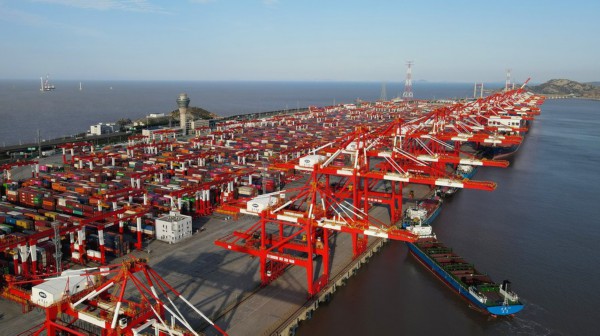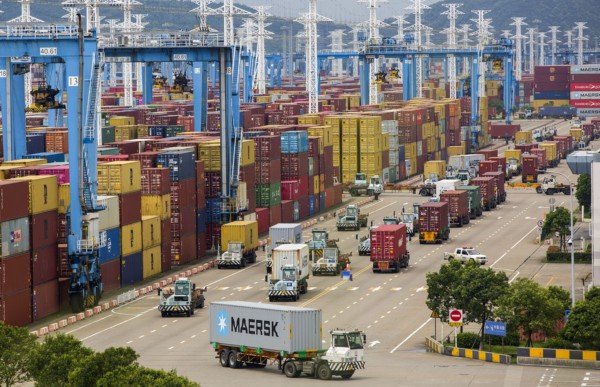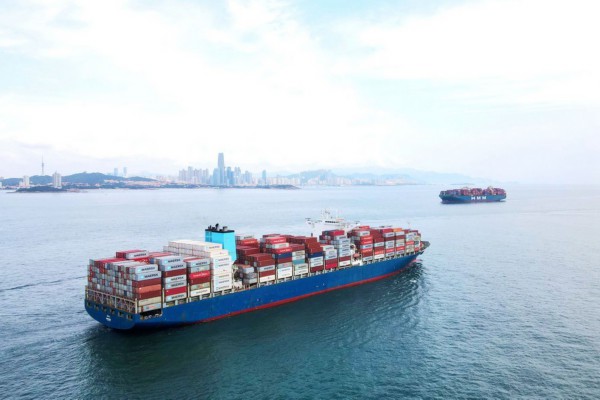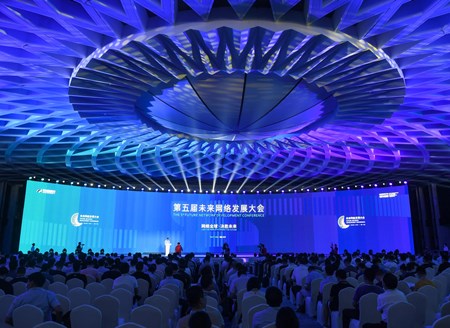The COVID-19 pandemic has brought unprecedented challenges, unseen in decades, to the maritime transport sector, but industry players have been accelerating digitalization to tackle the difficulties.
Their efforts have helped reassess the old just-in-time supply chain model, create longer-term partnerships and build resilience to get out of the swamp and contribute to global trade recovery.
Some major economies have worked hard to ensure a stable and smooth international supply chain.
BEIJING, Oct. 2 (Xinhua) -- The COVID-19 pandemic has brought unprecedented challenges, unseen in decades, to the maritime transport sector, but industry players have been accelerating digitalization to tackle the difficulties.
Their efforts have helped reassess the old just-in-time supply chain model, create longer-term partnerships and build resilience to get out of the swamp and contribute to global trade recovery.
The Shanghai Containerized Freight Index, which reflects the spot rates of the Shanghai export container transport market, stood at 4,614.1 on Sept. 30. At the beginning of last year, the index was a little over 1,000.
On the other side of the Pacific Ocean, the ports of Los Angeles and Long Beach saw another round of congestion last month as businesses prepare for the coming Christmas season.
Some 61 container ships were at anchor or drifting in San Pedro Bay off two ports on Oct. 1, according to the Marine Exchange of Southern California.

Aerial photo taken on April 6, 2021 shows a view of the automated container terminal of Shanghai's Yangshan Port, east China. (Xinhua/Fang Zhe)
Since the second half of last year, ever-rising freight rates and port congestions have become the "norm," hugely impacting global supply chains, liner companies, foreign trade enterprises and consumers.
"I've been in the industry for 40 years, and I've never seen anything like this," said Lars Mikael Jensen, head of East-West trade, Global Ocean Network, A.P. Moller-Maersk.
The maritime transport network was so broad and the global supply chain was super-efficient before the pandemic, so when there was a delay in one port, it would certainly have an impact somewhere else, said Jensen when explaining the ripple effect of port congestion.
A set of COVID-19 pandemic-induced factors have combined to cause the strain on the maritime supply chain in the liner shipping industry, Jan Hoffmann, Head of Trade Logistics, United Nations Conference on Trade and Development (UNCTAD), said in a commentary published on the organization's website.
The swift rebound in containerized trade enabled by an early and rapid recovery in China and measures adopted in the United States and Europe that supported household income and expenditure are two key factors causing the strain on the maritime supply chain, Hoffmann noted.
The normal turnaround time for containers, trailers and ships in ports and intermodal transport links is slower than usual due to health regulations, said Hoffmann, adding that supply capacity is not growing fast enough to catch up with demand and the ability of ports to adjust is more constrained than that of shipping lines.

Photo taken on Aug. 15, 2021 shows a view of the Ningbo-Zhoushan Port in east China's Zhejiang Province. (Photo by Suo Xianglu/Xinhua)
Although the pandemic has given the container shipping industry a head-on blow, it has forced the industry to accelerate transformation and upgrading, which could be a blessing in disguise.
The pandemic has quickened the container shipping industry's digitalization.
With shippers' increasing need to plan ahead and manage the whereabouts of goods precisely amid global supply chain snarls, both deep-pocketed traditional freight giants and startups have worked hard to develop digital systems to offer customers better visibility.
"Instead of sending emails and asking where their cargoes are, they will be able to know exactly where their products are through our system," said Jensen.
The Danish logistics giant is also looking to orchestrate the entire supply chain for its customers, offering door-to-door service covering their transportation from the factories in the origin all the way to the distribution centers and shops in the destination.
Both the container shipping companies and foreign trade enterprises have learned from their experience during the pandemic that they have to build more stock and time buffer.
The high freight-rate volatility and capacity uncertainty have led more foreign trade companies to consider signing longer-term contracts with shipping companies, start shipping earlier to prepare for high seasons and increase inventories.
Shipping companies like Maersk are looking to offer more reliable schedules.
"The direction goes towards being sure that the cargoes arrive on time rather than having the fastest possible transit time," said Jensen.
Maritime transport is essential to keep global trade flowing and supply chains connected during and beyond crises, and the sector's efforts to get out of the turbulence have implications for global trade recovery.
Even with periodical lockdowns, travel restrictions, complex sanitation and clearance procedures at the customs, and many other inconveniences amid the COVID-19 pandemic, global trade did not come to a standstill.
"When the pandemic first started last year, we were worried ports would close down completely. But they have not," said Jensen.
It is important to note that the world was still connected back then, the goods did not stop moving across countries or regions, and there were still plenty of ships a week that were sailing from Asia to Europe with goods, he added.

A container ship is seen on the sea of Jiaozhou Gulf, north China's Shandong Province, Aug. 7, 2021. (Photo by Yu Fangping/Xinhua)
Some major economies have worked hard to ensure a stable and smooth international supply chain.
China has rolled out measures to avoid sporadic COVID-19 outbreaks at ports, speed up terminal operation and cargo turnover, and accelerate port customs clearance by adopting informationized and paperless procedures, said Ding Li, secretary-general of the China Ports and Harbours Association.
Container ships for domestic trade have begun to be used on foreign trade routes to increase international shipping capacity, Ding added.





